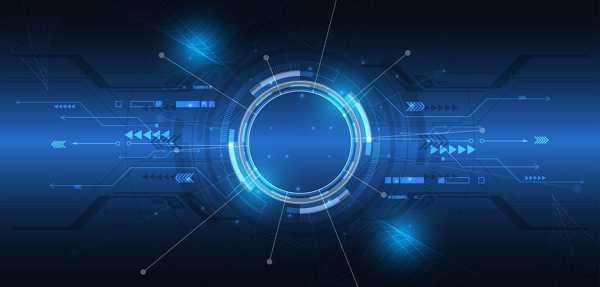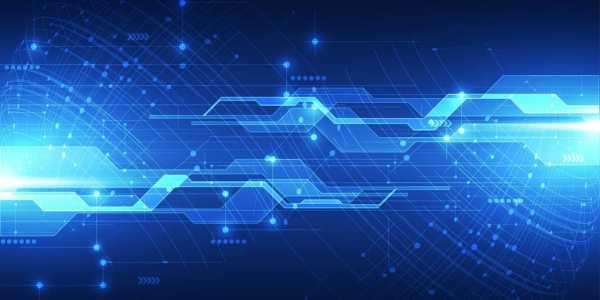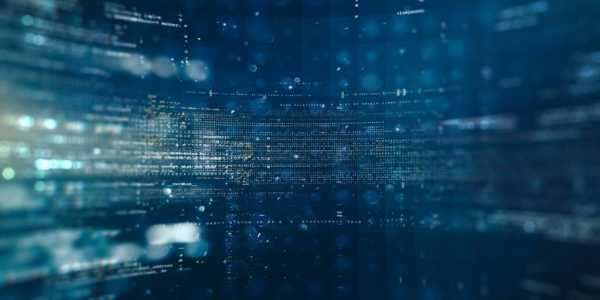
Each year, the MIT Technology Review publishes a list of outstanding innovators under 35. They come from fields as diverse as biotechnology, robotics, artificial intelligence, nanotechnology, energy, the web, transportation, communications, materials and computer hardware. Their innovations are recognized as having the potential to provide solutions with global ramifications and make a big difference in the way people live, work, heal and think.
A large number of these scientists tend to be female and of South Asian origin. In a culture where Bollywood buffoons, Vedic plastic surgeons, street thugs-turned-politicians and grown men running around a field with wooden bats dominate the national conversation, it is reassuring to know that there are still people capable of doing the heavy lifting required to actually make a difference in the world. They may not be on social media incessantly, seeking validation as influencers, but that’s probably because they have a life in the real world. I reached out to some of these young visionaries to talk about their work and what drives them to do what they do.
Ritu Raman
Ritu Raman is currently a postdoctoral fellow in the renowned Langer Lab at the Massachusetts Institute of Technology (MIT), funded by a Ford Foundation Fellowship by the National Academies of Sciences, Engineering, and Medicine and L’Oréal USA For Women in Science Fellowship. She is working toward starting a biohybrid design lab focused on building implantable devices that sense and adapt to the body.
Raman’s robots are made out of both polymers and muscle tissue and are capable of sensing their environment and recognizing temperature, pH and mechanical pressure.
When did you first realize you wanted to pursue a career in science and technology? Do you come from a family with a science background?
I grew up admiring the three innovators that shaped my early life: my mom, my dad and my granddad — all engineers. Whether it was launching their own startup in India, connecting rural Kenyan villages to the telecommunications grid or just fixing a broken alarm clock around the house, they always used scientific innovation as a force for positive social change in their communities. They are my constant source of inspiration as I work toward bio-hybrid design to advance human health.
I am also incredibly grateful for all the teachers, advisers, mentors and friends who never let me believe that being a woman precluded me from STEM education. Innovation is a team sport, and I couldn’t have done it without an incredible support network.
Can you explain “soft robotics”? What are its potential applications?
I’m a mechanical engineer by training, but I got bored of the materials mechanical engineers traditionally build with — things like metals, plastics, ceramics, etc. I grew interested in exploring nature’s building blocks, biological materials, because of the way they can sense and adapt to their surroundings. This isn’t something you see in traditional synthetic materials and, in my opinion, [that] makes them fascinating. My PhD focused on building robots that were part biological and part synthetic. These biohybrid robots, or “bio-bots,” used skeletal muscle to move and walk around. Because they used a biological material as an actuator, they were able to do things traditional robots can’t do, such as get stronger when exercised or heal when damaged.
In my future lab, I want to take this idea of biohybrid design into the world of implantable devices. My current work is focused on building responsive implantable devices for some of the most challenging environments in the body. In every project I work on, I use a material that senses and adapts to its surroundings to monitor and therapeutically modulate the body in real time.
You are deeply invested in supporting other women in their pursuit of STEM (science, technology, engineering, medicine) education and careers. Tell us about the Women in STEM Database at MIT (WiSDM) initiative.
The Women in STEM Database at MIT is my newest endeavor to help support and promote the careers of women in STEM. The goal of WiSDM is to provide a curated searchable online database of MIT STEM women, making it easier to find talented and diverse speakers for conference talks, panels, news stories, outreach events, etc.
WiSDM includes MIT faculty, postdocs, research staff and graduate students from all STEM fields. In addition to including each listed speaker’s areas of technical expertise, the database also includes information about non-technical expertise, such as science policy and entrepreneurship. The searchable database is intended to help people who want to make sure women’s voices are represented at STEM events.
I think it’s really important for young girls to see women represented as leaders in STEM fields. In the South Asian community, we are lucky to have many examples of family members or friends pursuing a variety of STEM careers, and I think that can create a positive feedback loop.
Archana Venkataraman
Archana Venkataraman is the John C. Malone assistant professor of electrical and computer engineering at Johns Hopkins University. She is using artificial intelligence (AI) to better map the human brain and to develop entirely new ways to diagnose and treat neurological disorders.
Venkataraman’s lab, the Neural Systems Analysis Laboratory (NSA Lab), concentrates on building a comprehensive and system-level understanding of the brain by strategically integrating computational methods, such as machine learning, signal processing and network theory, with application-driven hypotheses about brain functionality.
How will artificial intelligence help to better diagnose and treat neurological disorders? Explain your area of research for the non-specialist.
The human brain is our quintessential black box. It is a myriad of neural pathways and interactions that we as humans cannot even begin to comprehend. As a result, we have a bare-bones understanding of neurological disorders and a limited ability to treat them. This complexity is where artificial intelligence shines. AI is awesome at finding patterns in messy and complex datasets, beyond what humans could intuit by themselves. This will give us a new perspective on neurological disorders, from subtle diagnostic cues to identifying which treatments may work best for which patients.
My research focuses on imaging data, which provides natural windows into brain functionality. My lab develops new AI algorithms for a variety of applications from predicting the severity of behavioral deficits in autism to localizing epileptic seizures. Clinicians can use this information to make better decisions for patients and, ultimately, work toward a cure for these disorders.
Why are autism, schizophrenia, epilepsy and Alzheimer’s disease not well understood despite decades of research? What are the root causes, and to what extent are they inherited?
Neurological and psychiatric disorders are incredibly complex but surprisingly subtle. For example, if I give you two brain images, one of a normal child and one of an autistic child, there is no way for you to identify which one is which [just by looking at it]. The same is true for genetics. While there is evidence that these disorders run in families, we do not have a clear genetic marker for any of them.
This make is incredibly difficult to “engineer” treatments for these disorders. Even the most sophisticated AI algorithms tend to overfit, meaning they memorize patterns that may just be quirks of the data rather than any biological phenomena. Given these challenges, I think the way forward in this field is to embed our preexisting insights about the brain directly into the AI frameworks. This is a tough and open problem.
Tell us about your groundbreaking work in the diagnosis and treatment of epilepsy.
Epilepsy affects nearly 3.5 million people in the United States, and roughly 30% of these patients do not respond to medication. If we can trace the seizures to a single brain region, then the best course of action is to surgically remove this seizure onset zone. Currently, seizure localization is based entirely on visual inspection of electroencephalography (EEG) recordings and magnetic resonance imaging (MRI) data. This process is often inconclusive and prone to human error.
My lab is developing computational tools that go one step beyond the naked eye. We have recently pioneered a seizure-tracking algorithm that automatically learns the propagation pattern of a seizure from EEG data to backtrack its onset. Not only does our algorithm beat state-of-the-art seizure detectors, but it can automatically learn the seizure onset with no prior information. In parallel to EEG, I am exploring the use of resting-state functional MRI (rsfMRI) to identify virtual lesions in the brain associated with epilepsy. These lesions could provide crucial insights into the underlying cause of seizures, which may otherwise go undetected.
Abhinav Kandala
After receiving his PhD, Abhinav Kandala joined the quantum computing group at IBM Research and, during his post-doctoral stint, experimentally studied the applicability of a noisy superconducting quantum processor to simulate small molecules and quantum magnets. This work was recognized by MIT Technology Review as one of 10 Breakthrough Technologies 2018.
Help us better understand how the quantum world differs from directly observable reality. How does quantum computing differ from conventional computing?
One big difference between the quantum world and what physicists refer to as the classical world has to do with uncertainty. For classical objects that we can see and touch, given sufficient information, we can predict their position and velocity with complete certainty. This is not the case for quantum objects, such as electrons in an atom. Here, their properties are instead described by probabilities. In contrast to the tangible objects around us, we speak in terms of the likelihood or probability of finding an electron at a certain position. These differences also translate to how information can be encoded and processed in conventional classical computers versus quantum computers.
In classical computers, the basic building blocks of information are bits, which take precise values of either 0 or 1. In quantum computing, the fundamental computing elements are quantum bits or qubits, where information is encoded in their quantum states that can now be described by probabilities of being in 0 and 1. Next, as we go to computers with multiple qubits, unlike their classical counterparts, we can encode information in states where one qubit cannot be described independently from another. This property, called entanglement, provides a far richer set of states to process information with.
What are some real-world applications of this technology? Explain the “killer application” you talked about recently.
While the laws of quantum mechanics can be used to describe complex quantum systems such as molecules, it was long realized that solving the resulting equations to predict properties of these systems is an extremely challenging computational task. Nobel laureate Richard Feynman’s seminal idea was that if we could hypothetically build a programmable quantum system — which we today call a quantum computer — we could simulate properties of natural quantum systems more efficiently.
With this context, simulating the properties of quantum systems such as molecules is expected to be a “killer application” for quantum computers. These kinds of computations are typical for any industry that deals with chemistry and materials and, currently, use a significant fraction of the world’s supercomputing resources.
Additionally, scientists are also exploring applications to “non-quantum” problems in optimization and machine learning. That said, it’s important to point out that today’s quantum computers are still error-prone. A central goal is to achieve a “quantum advantage” over conventional computers for some useful computation task, even with today’s noisy systems. To accelerate the pursuit of this quantum advantage, we’re engaging with organizations, researchers and students by providing public access to real quantum computers, over the cloud, on the IBM Q Experience.
Experimental physics is an exciting field encouraging a lot of out-of-the-box thinking. What is some of the most original and innovative work you have encountered?
Indeed, experimental physics often provides the seed for the technologies of tomorrow. Related to my graduate research, what comes to mind are Nobel Prize-winning experiments that revealed that how electrons flow in certain materials can be connected to abstract mathematical ideas in topology. The properties of these materials like electrical resistance are remarkably insensitive to deformations in geometry or defects and this has potential applications to dissipation-less electronic devices.
Closer to my current work, the idea and demonstration that electrical circuits could behave as artificial atoms is extremely fascinating to me. This basically enables a new periodic table of man-made elements, and is essentially the physics that has led to the development of superconducting quantum computers.
The views expressed in this article are the author’s own and do not necessarily reflect Fair Observer’s editorial policy.
Source: fairobserver.com





